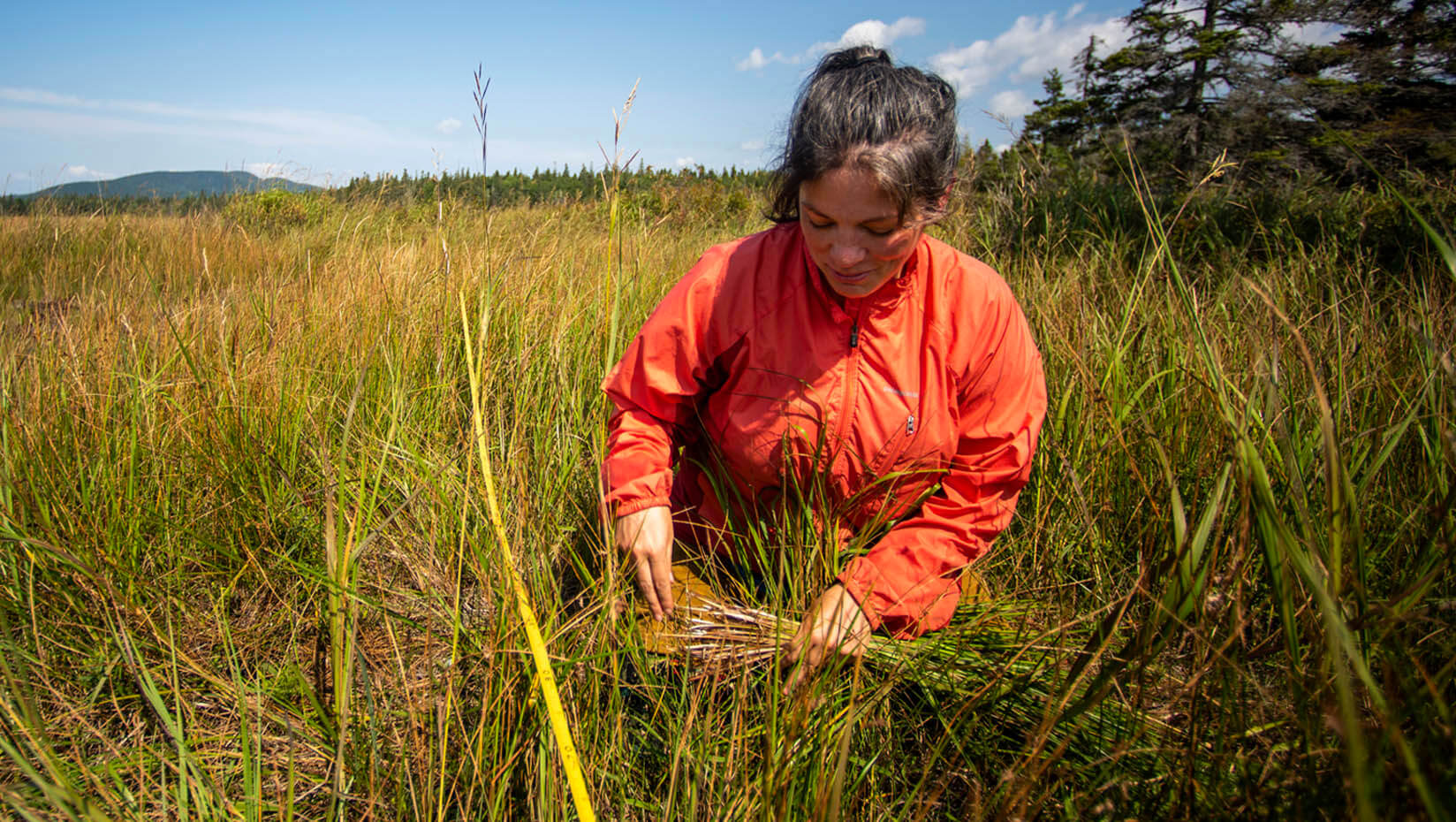
Indigenous stewardship should be central to conservation efforts, international study finds
Darren Ranco says Indigenous peoples should be part of land use decisions, including whether to expand the quarantine zone for the emerald ash borer in northern Maine.
“We have to be at the table because proof is in the pudding,” says the University of Maine associate professor of anthropology, chair of Native American Programs, and citizen of Penobscot Nation.
“When Indigenous people are on the land and making decisions about land management, biodiversity increases.”
An international study led by Erle Ellis agrees: It found that Indigenous peoples have shaped most of the Earth’s ecology for thousands of years and that the main cause of the current biodiversity crisis is not human destruction of uninhabited wildlands, but rather the appropriation, colonization, and use of lands previously sustainably managed.
Ranco and Jacquelyn Gill, a UMaine associate professor of paleoecology and plant ecology, are co-authors of the study titled “People have shaped most of terrestrial nature for at least 12,000 years.” Proceedings of the National Academy of Sciences, a journal of high-impact, original research, published the study April 19.
To truly understand land nature today, Ellis says it’s necessary to grasp the deep human history of that nature. And outside of a few remote areas — people and societies have shaped nature as we know it for thousands of years, says the professor and director of the Laboratory for Anthropogenic Landscape Ecology at the University of Maryland, Baltimore County.
“Our global maps show that even 12,000 years ago, nearly three-quarters of terrestrial nature was inhabited, used, and shaped by people,” he says. “Areas untouched by people were almost as rare 12,000 years ago as they are today.”
Even lands that have been characterized as “natural” and “wild” generally have long histories of use, as do protected areas and Indigenous lands.
“Efforts to conserve and restore these human-shaped natures won’t be successful without empowering the Indigenous, traditional, and local people who know their natures in ways that scientists are only beginning to understand,” says Ellis.
Ranco, Gill and 15 other scientists from around the world joined Ellis to examine the early and sustained global significance of cultural landscapes with a goal to better understand and conserve land and the animals and plants that live on it.
To do so, researchers utilized the most up-to-date, spatially explicit global reconstruction of historical human populations and land use.
They found the primary cause of declining biodiversity is the appropriation, colonization and intensifying use of land that was already inhabited, used, and reshaped by current and prior societies. Global supply chains, mechanization, and chemical nutrients and pest control have accelerated the trend toward more intensively used and homogeneous cultural landscapes, the team found.
Gill says the findings push back against the binary of natural versus anthropogenic. Not all human activity is inherently bad. There’s a continuous spectrum of land use activities and intensities. Hunter-gatherers and early farmers, for instance, created diverse, dynamic, and productive mosaics of lands and novel ecological communities that were sustained for millennia.
The project, says Gill, also demonstrates the power of big data.
“The biodiversity crisis is global and tools like this are powerful, because they will help us meet the challenge at the scale of the problem,” she says. “We have an incredible opportunity to take this information and apply it to how we relate to land at the local scale going forward. Indigenous knowledge and stewardship should be central to conservation efforts. We can coexist with nature and wildlife.”
People don’t have to be hands-off or not visit places they care about. “It invites all of us to think about our place in nature,” Gill says. “To learn how to be a good steward and good ancestor for our children and grandchildren and great-grandchildren.”
In addition to Ellis, Ranco and Gill, co-authors include Nicolas Gauthier at the University of Arizona, Kees Klein Goldewijk at the PBL Netherlands Environmental Assessment Agency and Utrecht University, Rebecca Bliege Bird at Pennsylvania State University, Nicole Boivin at the Max Planck Institute for the Science of Human History in Germany, Sandra Díaz at the Universidad Nacional de Córdoba in Argentina, Dorian Fuller at the University College London, Jed Kaplan at the University of Hong Kong, Naomi Kingston at the UN Environment Programme World Conservation Monitoring Centre in the United Kingdom, Harvey Locke at the Yellowstone to Yukon Conservation Initiative in Canada, Crystal McMichael at the University of Amsterdam, Torben Rick at the Smithsonian Institution in Washington, D.C., Rebecca Shaw at the World Wide Fund for Nature in San Francisco, Lucas Stephens at Duke University, Jens-Christian Svenning at Aarhus University in Denmark, and James Watson at the University of Queensland in Australia and the Wildlife Conservation Society in New York.
Contact: Beth Staples, beth.staples@maine.edu
